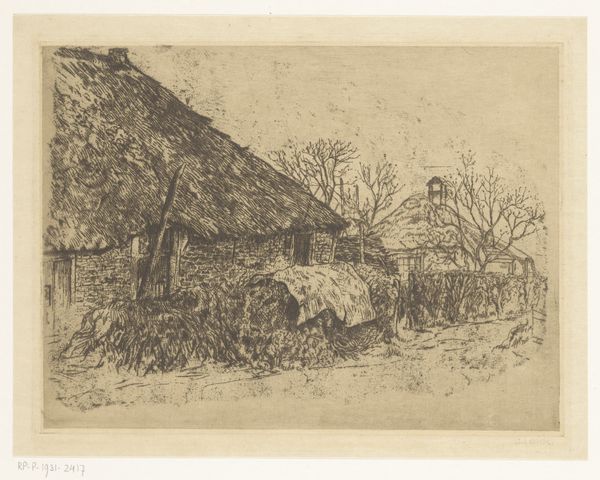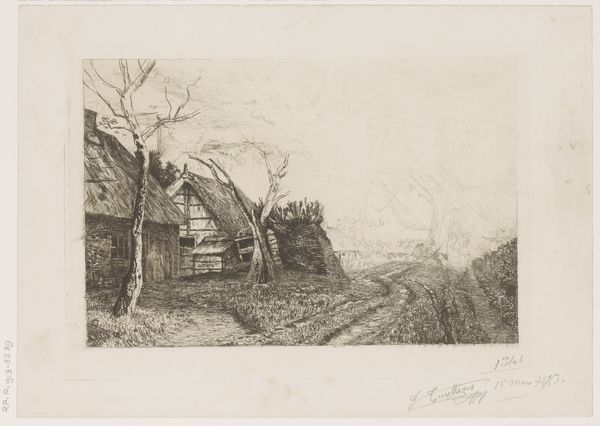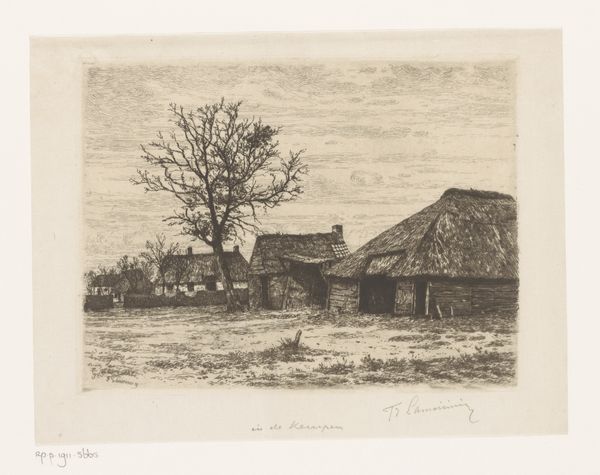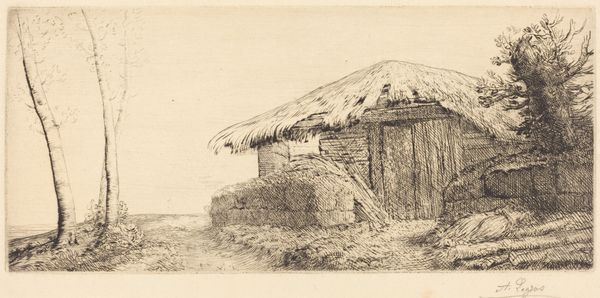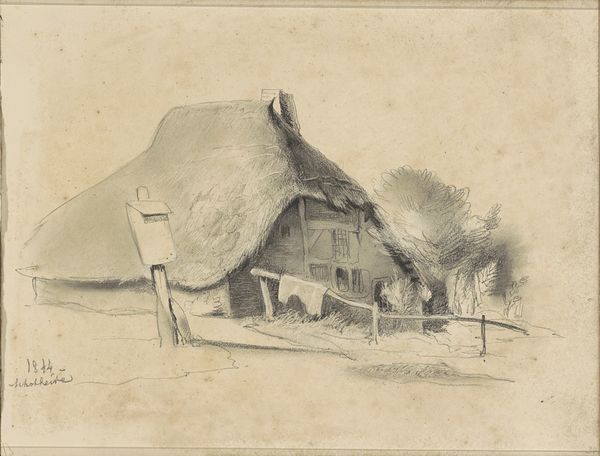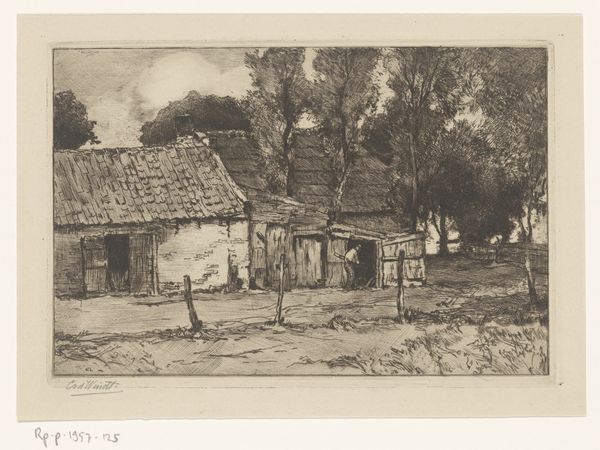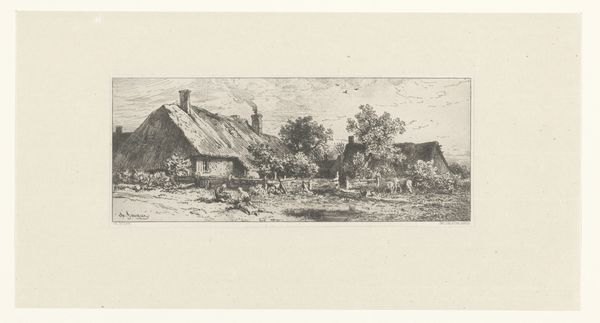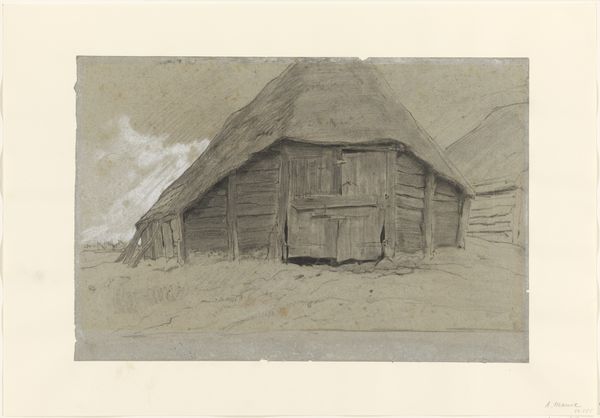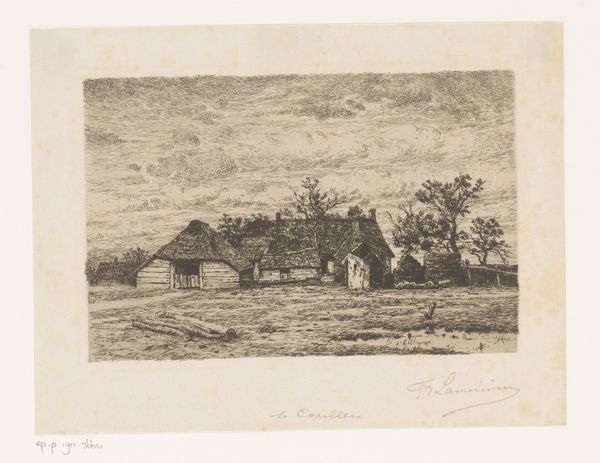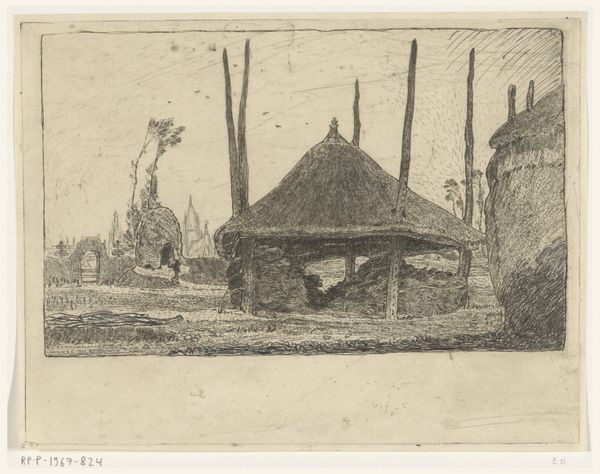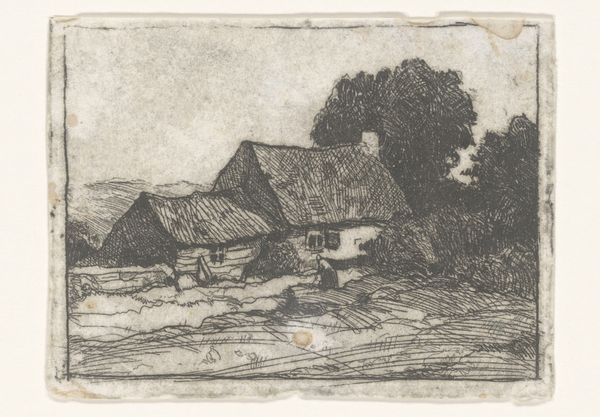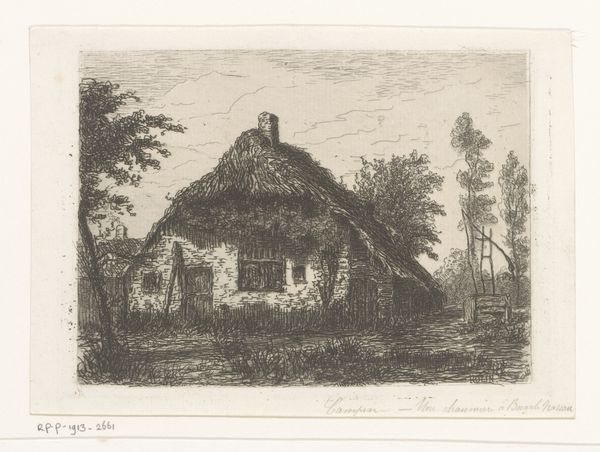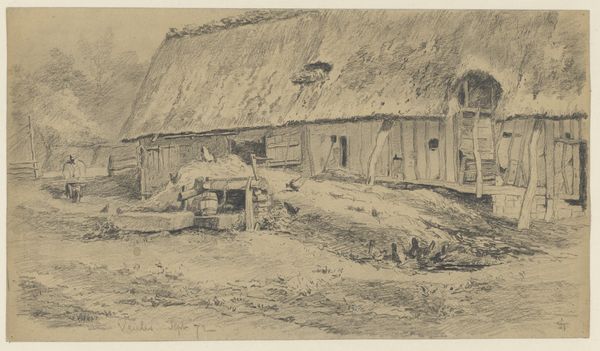
print, etching
#
dutch-golden-age
# print
#
etching
#
landscape
#
etching
#
realism
Dimensions: height 102 mm, width 149 mm
Copyright: Rijks Museum: Open Domain
Curator: This delicate etching by Frederika Henriëtte Broeksmit, entitled "Huis met rieten dak in Hattem," or "House with a thatched roof in Hattem," offers a glimpse into rural life between 1885 and 1931. What strikes you about it? Editor: There's an almost melancholic feel to it. The subdued tones and the bare trees evoke a sense of quiet solitude, a landscape waiting for spring. I'm immediately drawn to the texture, particularly the detailed rendering of the thatched roof, its complex patterns catching the light. Curator: Broeksmit, although perhaps not a household name today, actively participated in various artist societies during a time when women artists faced significant hurdles. This print offers an intriguing perspective on Dutch rural life, moving away from the more idealized representations that were common. Editor: It’s the lack of idealization that interests me most. Note the careful arrangement of lines creating depth—foreground, middle ground, background. Also, the subtle tonal variations defining the humble materials, rendering not just a house, but the feel of a place lived in. Curator: The choice of etching as a medium itself is significant. It was an accessible and reproducible form, enabling artists to distribute their work to a wider audience. Prints like this could challenge established notions of art, moving beyond elite patronage. Editor: The restricted palette creates an incredible range of effects and allows one to look for nuances in line, shape and contrast instead of being influenced by the visceral impact of color. And those stark trees behind the building frame it and contribute to an undeniable atmosphere. Curator: Absolutely. The social and political context encouraged Broeksmit, and artists like her, to create more realistic, relatable, art that ordinary people could engage with. They were telling stories of their time through intimate landscapes. Editor: So, it’s much more than just a charming rustic scene then, as the structure here facilitates social commentary through pure formal language. I come away struck by its somber elegance and visual intelligence. Curator: Precisely. I agree with your assessment; hopefully, listeners will leave with a greater appreciation for this and similar works from that period.
Comments
No comments
Be the first to comment and join the conversation on the ultimate creative platform.
